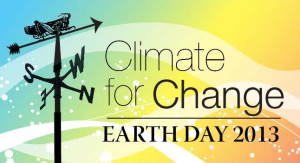
Dillon Papier
Hosting your own birthday party as an event to raise awareness and donations for an important cause is a creative, thoughtful and selfless way to mark this milestone. This is exactly what Maris Walker of Bowie, Maryland did this past Sunday for her 11-year-old grandson, Dillon Papier. This year, her April 14th birthday coincided with Dillon’s eighth annual fundraiser to fight Niemann-Pick Disease, Type C (NPC), a very rare and fatal disease affecting approximately 500 children globally. Maris invited her family and friends to celebrate her 70th birthday at the opening game for the Bowie Baysox, an AA team in the Baltimore Orioles‘ organization. The celebration, held in a corporate suite at the Baysox stadium, priced at $50.00, included a ticket to the game, food and drinks.
The party kicked off on a bright and sunny afternoon with both Maris and Dillon “throwing out first pitches”. While everyone laughed, ate, drank, mingled and watched the game, we remained mindful of the cause. We saluted Maris’ birthday and Dillon’s courageous battle against NPC. The attendees included a host of family, friends and community supporters, including a little league baseball team that presented Dillon with a basket of “goodies”. There were tables in the corporate suite, as well as in the area for the general public, that displayed literature on Niemann-Pick Disease, along with t-shirts, wristbands, etc., for purchase to support the National Niemann-Pick Disease Foundation, Type C research.
ABOUT NIEMANN-PICK DISEASE, TYPE C
Niemann-Pick Disease, Type C, (NPC) often is called Childhood Alzheimer’s. Children with NPC are unable to properly metabolize cholesterol and other lipids, resulting in the accumulation of excess cholesterol levels in the liver and spleen, along with excessive accumulation of other lipids in the brain. NPC is characterized by “an enlarged liver and spleen, clumsiness with loss of muscle control, deterioration of speech, seizures, and progressive neurological decline“. To date, NPC is 100% fatal. Many of the children diagnosed with this disease “die before the age of 10 or within 5-10 years of the diagnosis”.
ABOUT DILLON
Dillon Papier is the 11-year-old son of Darrile and Mark Papier of Urbana, Maryland. A little shy until he gets to know you, Dillon is a wonderful young man, who loves family, baseball and gourmet food. His love of music becomes apparent immediately when he melodiously sings “Take Me Out to the Ballgame” during the 7th inning stretch. He was diagnosed with Niemann-Pick Disease, Type C in 2005.
ABOUT DILLON’S ARMY
Dillon and his family display determination, courage and perseverance in their fight against Niemann-Pick Disease. Their brave battle has attracted the attention of so many sports organizations (including the Washington Nationals and the Baltimore Orioles), local businesses and individuals that they are collectively known as “Dillon’s army“. Attendance at any of the many events to raise awareness and money to support the National Niemann-Pick Disease Foundation’s research to find a successful treatment to save Dillon and other children affected by this devastating disease immediately inspires you to enlist in Dillon’s army.
We here at LGBG salute Dillon for his courage. We also would like to wish Maris a happy birthday and to say thank you for your uplifting spirit and wonderful idea to use your birthday celebration to support such a worthy cause. Fighting for the health of children and security of families definitely is part of the green movement.
If I can do my duty, as a good man ought,
If I can bring back beauty, to a world up wrought,
If I can spread love’s message, as the Master taught,
Then my living shall not be in vain.
(Credit: Mahalia Jackson)
__________________
Sources for this article:
1. http://www.dillonsfight.org/aboutthedisease.htm.
2. http://www.capitalgazette.com/bowie_bladenews/news/a-bowie-grandmother-hopes-residents-pitch-in-for-special-baysox/article_70e97ac0-be41-5500-8b35-3ad8c1495c9f.html?mode=jqm.
3. http://www.nnpdf.org/
Dillon and Maris










